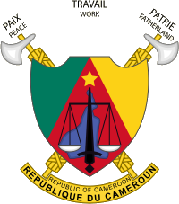The statistical yearbook for this sector was presented on 30 May 2023 during a ceremony presided over by Minister Achille BASSILEKIN III. It took place at the Yaounde Conference Centre in the presence of representatives of several public administrations and SME promoters.
Statistical data on SMEs in 2022 show a 7.85% increase in the stock of SMEs compared to 2021, and a 4.45% contribution by SMEs to the densification of the economic fabric. For the Minister of SMESEHs, “the 2022 edition of the statistical yearbook shows an overall improvement in the economic activity of SMEs, social economy players and craftspeople, in a context marked by the Russo-Ukrainian crisis and persistent inflationary tensions”. In 2022, the number of businesses in Cameroon was estimated at 350,422, of which 349,722 are SMEs. The structure of those involved has not changed fundamentally since the phase 2 of the general census of enterprises (RGE-2), with a preponderance of sole proprietorships (97%) and SMEs operating in the tertiary sector (81.73%). In addition, 15,601 businesses were created and registered in the Enterprises Creation Procedures Centres in 2022, mainly sole proprietorships (52.97%). Very small Enterprises (VSEs), meanwhile, are the most represented (83.73%), with an entrepreneurial age ranging from 35 to 45. Although the majority of business promoters in 2022 were male, a good dynamic in female entrepreneurship over the period 2017-2022 has been noted, with an increasing trend in the number of businesses created by women.
As for Social Economy Organisations (SEOs), 3,405 were registered in 2022. The activities of these organisations, 47.88% of which are oriented towards agriculture, are 63.88% in the primary sector.
The number of Handicraft Production Units (HPU) registered at municipal registration offices was 5,912 in 2022, dropping by 3.59% compared to the previous year. These registrations were highest in the Far North region (26.49%), with a good dynamic (51.38%) driven by women. In 2022, there were equally 1,055 SMEs, 822 SEOs and 1,320 HPUs which benefited from multi-faceted technical support.
Discussions
Discussions that followed the presentation of the statistical yearbook were an opportunity for several government administrations and SME promoters to stress the importance of producing such a document. While commending the initiative, Mr Modou Sanda, Statistical Engineer and Economist, in charge of studies and Assistant at the National Institute of Statistics, pointed out that the statistical yearbook was evaluated in two phases, namely “the evaluation of the data production process, which includes determining statistical information, designing the yearbook layout and collection tools, developing them, collecting the data, processing, analysing, disseminating and archiving them. The second phase covers the evaluation of the data produced, in terms of relevance, accuracy, reliability, timeliness, intelligibility, consistency, comparability and accessibility”. The expert statistician nevertheless believes that, in order to improve the system, MINPMEESA should insist on the needs identification stage, in order to take into account, all the demand for statistical information in its field. It should also update its Statistical Information System (SIS) to ensure more fluid, frequent and sustainable provision of statistical data. “The National Institute of Statistics can support it in this,” he added.
Cameroon has not conducted any SME census since 2015. The statistical yearbook meets a need for “better evaluation of the implementation of public policies thanks to the performance indicators that enables us to calculate using a certain number of variables, in particular the stock of SMEs”, stated Mamoudou BOBO, Head of Studies, Projects and Forecasts Division in MINPMEESA.

